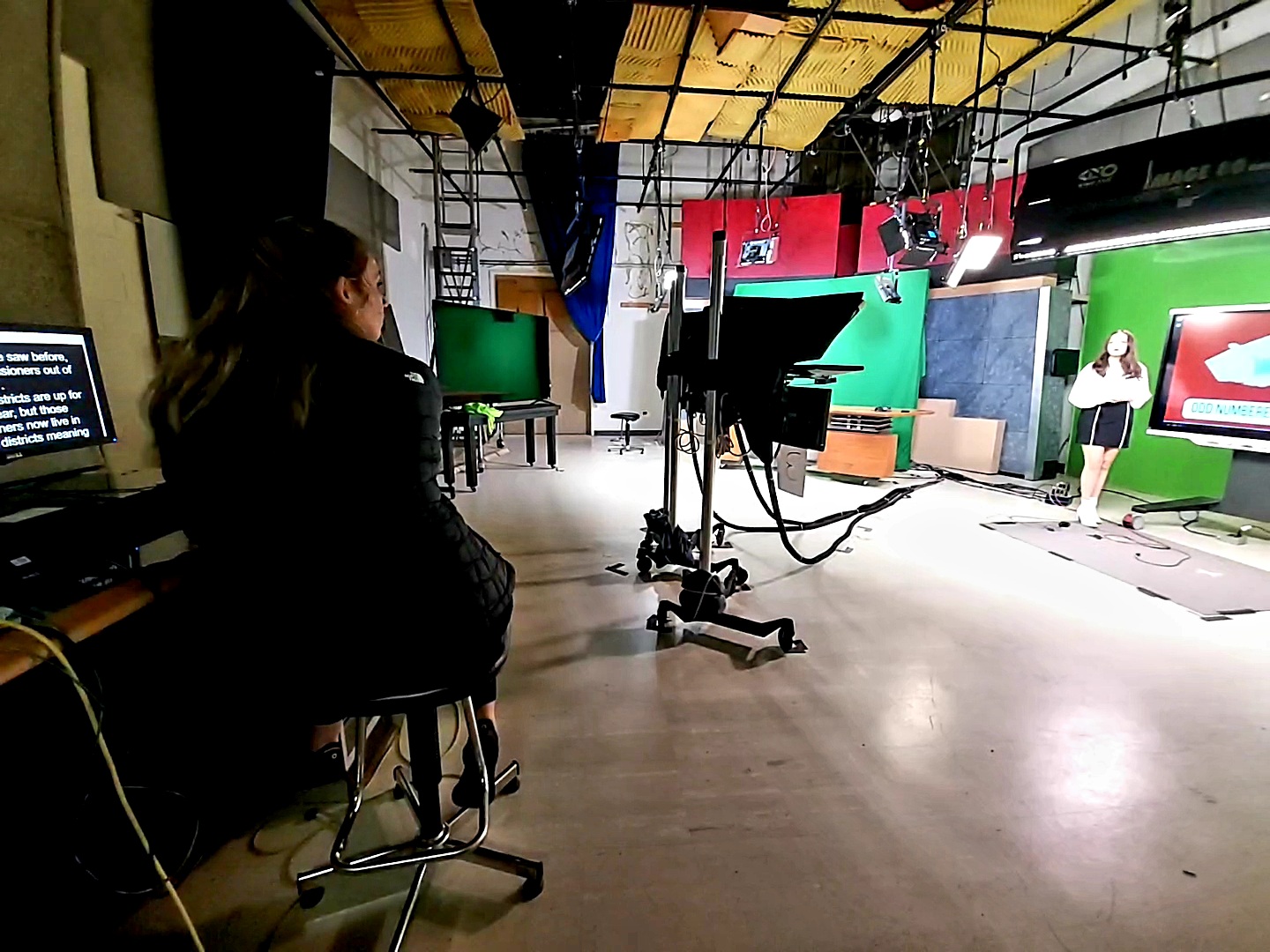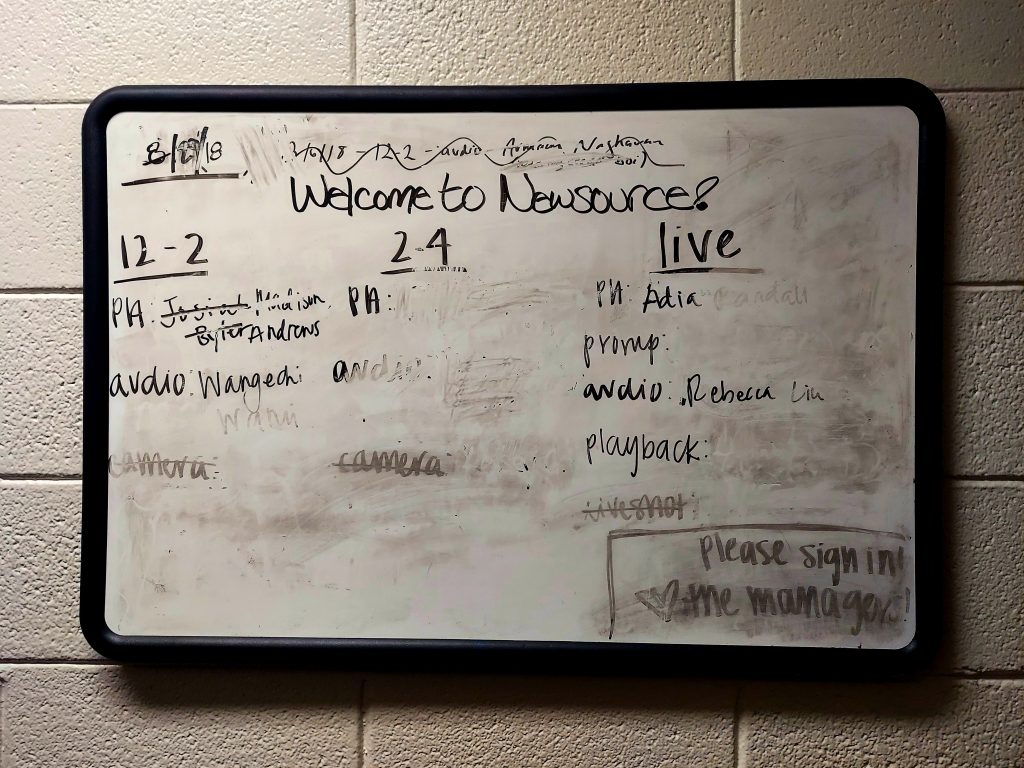
On Monday and Wednesday evenings, students in the Newsource broadcast capstone class create Newsource at 5. Over the course of each half-hour show, the broadcast journalism students watch the television packages they’ve spent the day assembling, take turns serving as the anchors and critique their work after the show.
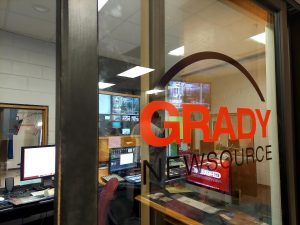
However, there is more to the story than the cohort we see on screen. Behind the scenes, a group of student volunteers is hard at work making sure the tech that makes these broadcasts possible runs smoothly.
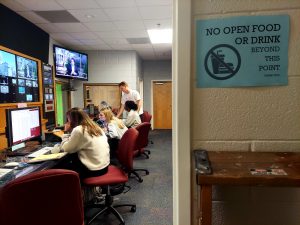
At 4 p.m. on Feb. 21, managers Lauren Mimick and Molly Langdon and senior manager Harper Blankenship are already in the studio preparing for the evening’s broadcast.
The managers trade off the roles they perform, but tonight, Lauren Mimick is the video manager. Mimick will receive film clips from the Newsource journalists over email, download them and connect them to the director’s station.
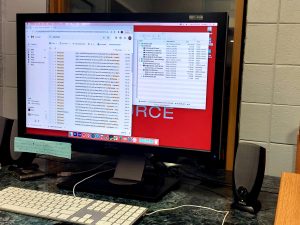
These clips are called “playback” – the portions of the show that are pre-recorded, like the introduction, weather, sports and, most important, the news segments the student reporters prepared for the show.
Tonight, the playback volunteer is Tsemaye Oseragbaje, who is responsible for making sure the right video is on screen at the correct times.
In addition to “playback” clips, the broadcast will also record the anchors who are hosting the show live, in the studio. These are called the anchor shots. Sometimes Newsource reporters will also go out in the field to report a story live. This is called a liveshot, but there won’t be any today.
The audio for each of these categories of video are also controlled separately from the sound booth.
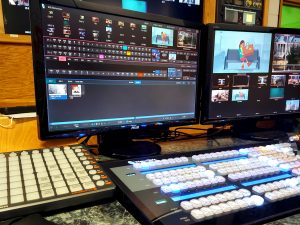
Langdon is the director tonight. She determines the order of the clips and is currently preparing to give a rundown meeting once the volunteers arrive. There, she will announce the order of segments and clips in the evening’s show.
Once the show starts, Langdon will be telling the volunteers when to switch between “playback,” “anchor one,” “anchor two” and, when applicable, “liveshot.” Essentially, she’s the one running the show, making sure everything’s lined up correctly between “playback” and what’s happening live.
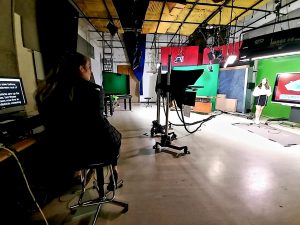
While the managers finish preparing inside the control room, in the studio, tonight’s prompter volunteer, Sarah Sims, is helping one of tonight’s anchors, Madison Cook, rehearse her lines on the teleprompter.
As prompter volunteer, it’s Sims’s responsibility to make sure the anchors are reading the correct blocks of text, that the text is moving at the correct pace and that it’s correct, in case there are any errors that escaped proofreading.
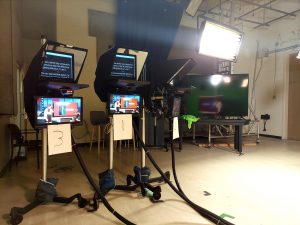
While Sims and Cook rehearse, the rest of the volunteers arrive. Once the team has assembled, and Langdon has finished preparing, it is time for the rundown meeting.
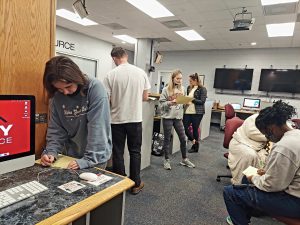
The volunteers exit the studio space and assemble with the reporters in the Newsource classroom. Langdon and Blankenship pass out yellow slips with each segment that’s scheduled to air. These forms have empty boxes for the volunteers to take notes in.
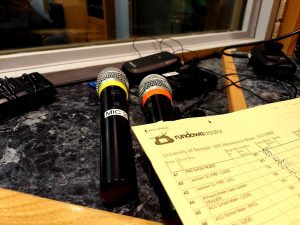
Then, Langdon calls out the category of each segment so that the volunteers know when to switch between video and sound channels.
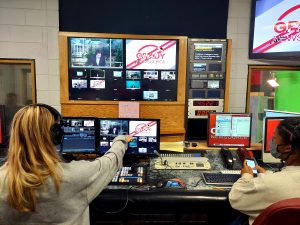
After the rundown meeting, the volunteers take their places and it’s time for soundcheck. In the studio, floor director Sarah Fredrickson puts on a headset and the anchors get settled in for the show.
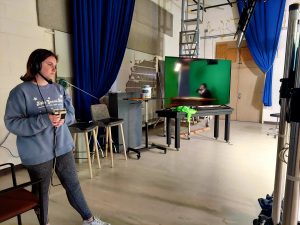
Once the anchors receive their microphones, it’s time for sound check. In the audio booth overlooking the studio, Blankenship and audio volunteer Colin Ochs adjust the microphone sound levels to make sure they are consistent.
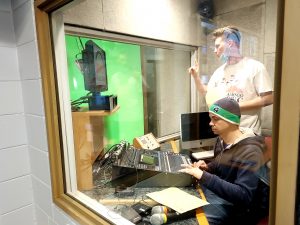
Throughout the show, Ochs will continue to switch between audio channels and will adjust volume levels to make sure they stay at an appropriate level. He will also be responsible for bringing the theme music at the beginning and end of the show.
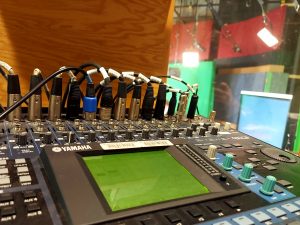
Once sound check is complete, Ochs slowly brings in the Newsource theme music and just before 5 p.m., Blankenship starts the livestream and the action begins.
Most Newsource volunteers are journalism students, but they still have different reasons for joining the crew.
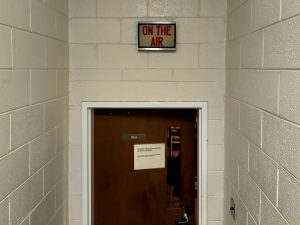
Some, like Sims, have only just embarked on their college careers.
“I want to go into sports broadcasting, but I know as a freshman, it’s super important to go ahead and just get involved,” Sims said. “I’ve heard nothing but great things about Newsource…So I just decided I might as well volunteer.”
Others want to gain more experience and many want to prepare to take the Newsource capstone in future semesters.
“I’ve volunteered to get more involved,” Langdon said. “I really like that besides broadcast and production, [I’m] able to kind of see what they do before I take the class.”
However, volunteering at Newsource isn’t reserved just for students at the College. Anyone can get involved.
“I guess it’s something different. I like trying new things,” Oseragbaje, a junior computer science major and tonight’s playback volunteer said, “I’ve never worked in a journalism environment before and I wanted to try it.”
Alex Anteau is a graduate student in the health and medical journalism program at the Grady College of Journalism and Mass Communication.


